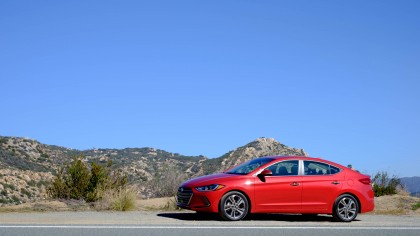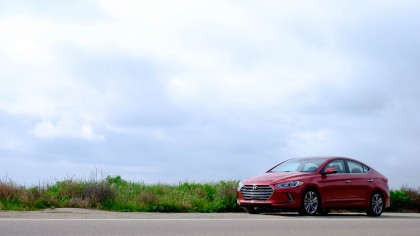Why you can trust TechRadar
Hyundai is on a roll with the current model lineup. I might nitpick over things that your average driver won't notice, like steering feel, power delivery and handling when the car is pushed beyond the typical daily commute, but Hyundai and the Elantra have come a long way since the '80s and '90s.
We liked
Hyundai announced its Display Audio infotainment system at CES 2015, the Elantra is the first car with the software necessary for Android Auto and Apple CarPlay support. The implementation in the Elantra works seamlessly with the car's native audio and navigation features, so you can pick and choose which functions you use from your phone or natively without any hiccups or user interface annoyances.
The driver assist suite available on the Elantra still leans toward the top of the compact class. The lane keep assist system is substantially more advanced than most of its competition and similar to the system in Hyundai's luxurious Genesis sedan (soon to be the Genesis G80). The only other competitor that can put up a tough fight with the Hyundai Elantra for driver assists is the Honda Civic.

Automatic emergency braking with pedestrian detection should give the Elantra a Insurance Institute for Highway Safety rating of Top Safety+, too.
I didn't play with Blue Link too much in the Elantra, but the experience has been consistent across all Hyundai cars that I've driven. While it does require a subscription after the initial 3-month trial period, the features and companion applications may be worth it if you need remote access to the car. Plus, the wearable companion app does makes me feel like James Bond when I can control the car from my watch.
The new Elantra trades the previous generation's aggressive swoops and curves for smoother lines and a fresh face. The rear end styling makes it look like a baby Genesis sedan (Genesis G70). I'm a fan of the styling and find the understated looks more sophisticated.
We disliked
Hyundai continues to install the hands-free trunk on sedans, and I wish they'd make it usable. Being able to trigger the trunk release by standing behind the car for a few seconds is a useful convenience. However, it doesn't help if you still have to raise the trunk lid yourself. This could be easily fixed by replacing the torsion rods with hydraulic struts that can raise the trunk and make the hands-free trunk truly hands-free.

Adaptive cruise control is an awesome convenience when you're stuck in traffic. The Elantra doesn't have the worse system in its class, but the full-speed range systems that can completely stop the car and hold it are better. Luckily for Hyundai, the 2016 Honda Civic is the only compact car to have a full-speed range system.
While it could be better, the Elantra's ACC works at 5 mph and above. This is more usable in traffic than systems that only work at 19 mph, but Hyundai should have gone the extra mile.
Final verdict
If you're shopping for a compact car with sharp looks, useful driver assist technologies and an intuitive infotainment system, the Hyundai Elantra is worth a look. The car offers plenty of technology, a comfortable ride and plenty of space and manages to stay under $30,000.

Its not as engaging to drive as a Volkswagen Golf or a Mazda 3s, but you can still have some fun on windy roads. The powertrain is smooth and economical, but if you want more power, I suggest waiting for the upcoming Elantra Sport trim.
Ultimately, the Elantra is a compact car that gets you from point A to B in comfort and style, with plenty of niceties, backed by a 10-year powertrain warranty. There are a lot of strong contenders in the compact class, but you can't go wrong with the Elantra.
